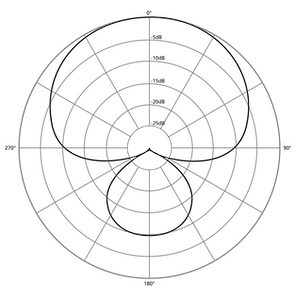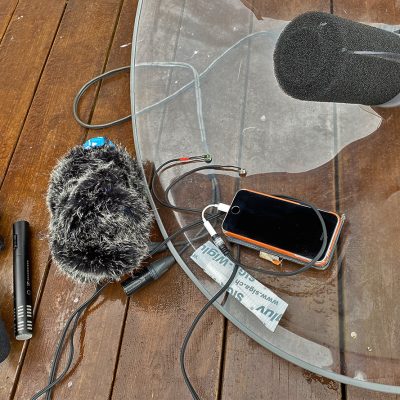
PARABOLIC MICROPHONE
There are several producers of ready-made systems suitable for birdrecordings, the difference is often build-quality (will it survive the bashing through rough terrain around the world), quality of microphones and self-noise, filtering etc. One of the best in the market is the Swedish made Telinga (telinga.com) but cheaper alternatives I see often used is the italian Dodotronics delivering good results.
In general you could state that larger the dish – more amplification will be achieved, but in practical terms it will be difficult to bring any larger than a 56 cm /(22 inch) dish into field. But a larger dish would benefit low-frequency song of owls, doves and other birds in the below-500Hz range.
Jon Bryant (see birdforum.net) published this explanation of the behavior of two dishes from Telinga, 36 and 56 cm wide;
«The 14 inch dish would start to amplify at above 970Hz, but recording with the dish would amplify overtones and create the impression of amplification by blocking noise from the side and back…. and there may also be some effect caused by ground, dish and mic interaction.
Bryant also found a formula for a parabola beam width, which is (Angular Proportionality Factor x Wavelength)/Dish Diameter. The Angular Proportionality Factor is a constant for any dish, as is the Diameter. This means that the beam width narrows as frequency increases and wavelength reduces, but you are right that a smaller dish will have a wider beam width.
At 1000Hz (as per your Jack Snipe recording), the theoretical beam width is pretty wide, but up at say 4000Hz (as per the flight call of a migrating Redwing) the beam width has narrowed considerable. Even the 14 inch dish would only have a beam width of circa 17 degrees for a sound at 4kHz. For a call of a Goldcrest at 9000Hz both beam widths are very narrow.
Working with a Angular Proportionality of 70 degrees (as stated in the article), the beam width of 14 and 22 inch parabolas would be as follows:»
| Frequency (Hz) | Wavelength | Beam Width 36 cm/14 inch (degrees) | Beam Width56 cm/22 inch (degrees) |
| 1000 | 0.343 | 67.52 | 42.97 |
| 2000 | 0.172 | 33.76 | 21.48 |
| 3000 | 0.114 | 22.51 | 14.32 |
| 4000 | 0.086 | 16.88 | 10.74 |
| 5000 | 0.069 | 13.50 | 8.59 |
| 6000 | 0.057 | 11.25 | 7.16 |
| 7000 | 0.049 | 9.65 | 6.14 |
| 8000 | 0.043 | 8.44 | 5.37 |
| 9000 | 0.038 | 7.50 | 4.77 |
| 10000 | 0.034 | 6.75 | 4.30 |
| 11000 | 0.031 | 6.14 | 3.91 |
| 12000 | 0.029 | 5.63 | 3.58 |
| 13000 | 0.026 | 5.19 | 3.31 |
| 14000 | 0.025 | 4.82 | 3.07 |
| 15000 | 0.023 | 4.50 | 2.86 |
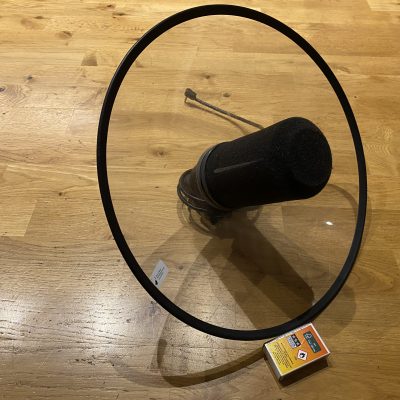
He thinks that theoretical equations are standard stuff, but the source is used was https://www.montana.edu/rmaher/publications/maher_aac_0805.pdf.
The article is a bit technical, but gives a theoretical equation for parabolic mic gain in DB. Figure 1 in the article shows theoretical gain for different dish sizes (although I don’t think it excludes frequencies where the dish is smaller than the wavelength). I think using the formal and the assumed values in the paper, you could easily create a plot of gain for your 14 inch parabola compared to a 22 inch dish (from a rough calculation the difference seems to be over 3dB).
The table Bryant created in the post is actually the ‘half power beam width‘, which he understand is a standard measure for a parabola ‘field of view’. The half beam width has a rather clunky definition in the paper (i.e. ‘the angular separation between the half power points of the antenna directional pattern, i.e., where the gain is one half the maximum on-axis value.’) So in the image below theta would be half the value calculated in the table.
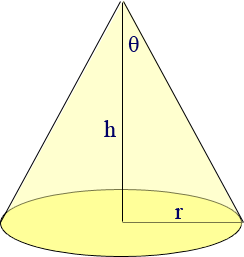
One of the arguments for using a parabola is that the higher the frequency the more sound attenuates over distance, so the fact that a parabola creates more gain with increasing frequency is counteracting this process. For some purists this is a cause of debate – are recording what a human hears (i.e. a sound with higher frequencies attenuated) or what the bird would sound like if you stood directly next to it.
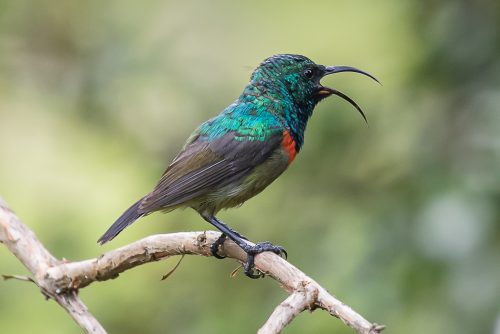
SHOTGUN MICROPHONES
Shotgun is a type of microphone characterized by an extremely directional polar pattern. Shotgun mics may be condenser or dynamic, but are almost always built with a long (20 to 60 cm/8 to 24 inch) tube protruding from the front. This tube has a series of holes or slots along the side, which act as a phase canceling device for sounds coming from the rear of the microphone. Sounds coming from directly in front of the mic enter each of the holes or slots in succession and therefore add in phase by the time they reach the diaphragm. Sounds from the rear enter in reverse order and thus are out of phase when they reach the diaphragm, resulting in little or no output. The longer the tube the more directional the microphone becomes. These properties make them ideal for pinpointing and capturing the audio of something from far away without capturing as much of all the ambient (or surrounding) sound. Source: Shotgun Sweetwater
As with a parabolic microphone closer you get to your subject thy more gain you will obtain. Shotgun is also prone to wind-disturbance and a good protection against noise from wind and the environment is necessary. You’ll need a fluffy “dead-cat/wombat” or a wind-muff to silence the wind.
